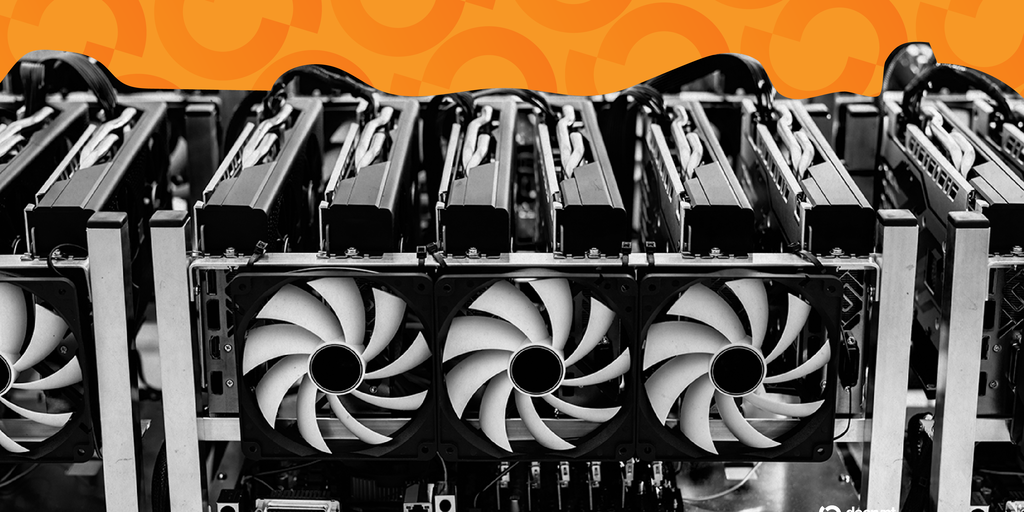💥One Of The Most Secure Multichain Swap Tools Around💥
(Dinarian Note: SAVE THIS TOOL, it is a 100% DECENTRALIZED swap/exchange tool with XRP included. If/When exchanges are shut down or inaccessible, this tool could be PRICELESS!)
How Rubic Provides Security for its Cross-Chain Swaps
As the blockchain industry is moving towards interoperability and Web3, there are more and more ways to move assets across different blockchains. However, with the increase of hacker attacks, there have been many concerns about the security and safety of assets that are being transferred across chains.
Rubic’s One-Click Cross-Chain Swap tool can solve many of those issues. Why should you trust Rubic for safe cross-chain swaps? How does Rubic maintain security for its users and partnered projects? Explore it all right in this article.
Are Cross-Chain Swaps Secure?
A cross-chain swap is a smart contract technology that enables transfers of tokens between two unique blockchains. It allows users to swap tokens directly to another blockchain without any intermediary or central authority.
Cross-chain transfers are often risky, but they unlock vast opportunities across the multi-chain world — like staking, farming, buying specific tokens, etc. It has gained a lot of traction in the last year, and similarly, it has become a favorite attack vector for hackers. Taking into account only the bridges, a whopping $2 billion has been stolen across 13 cross-chain bridges this year, which totals 69% of all funds stolen in 2022 so far.
Cross-chain bridges are inherently vulnerable to hacker attacks. They’re classified into trusted (custodial) and trustless (noncustodial). The first applies to a third party to make a transfer, and the second relies only on smart contracts and algorithms. Both feature significant flaws and technical weaknesses. The trusted bridges lose out due to their centralized aspect, while the trustless become vulnerable to exploits coming from the software. Is it possible to eliminate these breaches and avoid hacker attacks?
So far, there hasn’t been a perfect solution to solve this conundrum and to provide impeccable security in cross-chain technology. All of the recent hacker attacks (the Ronin Bridge protocol, Harmony One’s Horizon Bridge) elicit many questions regarding the safety of cross-chain swaps.
To bring forth the interoperable future, cross-chain technology has evolved from just cross-chain bridges alone to cross-chain aggregators. Cross-chain aggregators bring together bridges and DEXs, allowing users to spend less time and effort on transferring their assets across blockchains, compared to cross-chain bridges.
Also, aggregators tackle the issue of security differently, mainly because they integrate multiple solutions and can maintain swaps through different providers. Imagine that one evening you decide to cook dinner and suddenly your electricity has been cut off. Thanks to the fact that you have a gas oven, you still can prepare your meal. This analogy helps to explain how cross-chain aggregators work: the integration of numerous bridges and DEXs allows them to switch off the provider that has gone out of service, and redirect the user to a different, working one.
Moreover, cross-chain aggregators usually have a larger infrastructure, team, and developer support, which allows for maintaining security on a higher level and elaborating on more innovative measures to ensure the safety of swaps. The Rubic One-Click Cross-Chain Swap service has become one of those security innovators.
How Does Rubic Maintain Security?
Rubic, as one of the first players in the cross-chain market, along with DEX & bridge aggregators, has elaborated on the robust practices of maintaining security for its users and the integrators of its SDK and widgets.
Rubic’s cross-chain tools are built on the following core principles:
Sustainability
Rubic combines many bridges and providers and guarantees swaps even if one or many providers are down. Thanks to Rubic’s model architecture (Cross-Chain, On-Chain, Status Manager, Token Manager, Revert Manager), it continues to execute basic functions even if there’s something wrong with other modules.
Due to the aggregation of 70+ bridges and DEXs, Rubic guarantees sufficient liquidity when making any swap (which cannot be said when using a different bridge) even if some of Rubic’s providers stop operating, run out of liquidity, or get hacked.
Decentralization
Rubic doesn’t exploit any external servers: only Frontend and Blockchain. This significantly decreases attack vectors (like DDOS). To find the best swap deal for most of the cross-chain and on-chain providers, Rubic appeals to the provider’s API, and then the data is processed through their services.
Security
Like most other crypto projects, Rubic adopts security measures such as:
Audits — A security check of Rubic’s smart contract codes is provided by independent companies and developers.
Bug Bounty Program — A reward program for developers who find critical vulnerabilities in Rubic’s smart contracts.
Status Monitoring — In case of any critical issues, Rubic goes into Maintenance mode, notifying all the users and integrators.
On top of this, Rubic has implemented additional security practices: performance monitoring, accident management, and Rubic’s SDK Process Management.
Rubic’s Security Pillars
Performance Monitoring
To ensure the high performance of Rubic’s cross-chain tools, Rubic’s team utilizes Provider/Blockchain Monitoring Dashboard, scores providers for stuck transactions, daily volume, refunds, and checks out SDK live status.
Rubic utilizes automated tools for monitoring social networks on any potential risks with bridges or chains. If any issues arise, we use direct channels of communication with all bridges and providers to react quickly.
Accident Management
In case of an accident that might occur with one of Rubic’s integrated providers/blockchains, Rubic’s platform as well as Rubic’s SDK/Widget continue to function by taking the following measures:
All of Rubic’s integrators are immediately notified (via Discord, Telegram).
A compromised provider/bridge is switched off for all integrators by getting paused in the smart contract. In turn, Rubic continues working as usual by redirecting transactions to other providers.
In case of any issues with Rubic’s SDK, Rubic takes the same actions — immediate notification of its integrators and switching off of the compromised provider/bridge. Rubic’s technical support is also ready to assist 24/7.
Rubic’s SDK Process Management
Rubic is not just a platform enabling cross-chain swaps for individuals, but also a cross-chain toolkit for crypto projects, and all of these principles work for Rubic’s SDK/Widget integrators as well.
Continuous integration has allowed Rubic to build up the most robust principles of testing, staging, and production environment. Seamless, fast, and secure SDK management is fulfilled by the following:
A code approval process includes the review of several developers and a release approval process includes the review of the Product Manager and QA.
The smart contracts are audited.
Rubic uses direct communication channels for updates (new version release updates, comments) to reduce the possibility of installing a compromised version.
Rubic’s SDK Architecture
Rubic Cross-Chain tool & service has a unique architecture that provides the ultimate cross-chain swapping experience for its users and integrators. It’s being constantly improved and streamlined on all levels.
Overall, the architecture of the protocol is based on three parts: the core SDK modules, the modules related to external API (providers, CoinGecko), and the blockchain Interaction module (RPC Node).
1. Rubic’s SDK, which is also deployed in its main app, consists of the following modules: Cross-Chain Manager, On-Chain Manager, Status Manager, Token Manager, and Revert Manager.
2. Rubic’s SDK interacts with blockchains through the RPC Node. Rubic’s SDK accesses blockchain nodes to retrieve blockchain meta-information, invoke smart contracts, or send transactions.
3. Cross-Chain Manager incorporates on-chain swaps as well. To find the best swap option and build up the optimal route, Rubic’s SDK reaches out to the providers’ API, and then the transaction is sent to Rubic’s smart contracts, which call the contracts of cross-chain providers, in return.
4. On-Сhain Manager implies instant trades and means that you swap tokens on the same blockchain. To deliver transaction data and rates, Rubic appeals to 0x and 1inch as on-chain providers via external API. For the rest of the providers, Rubic receives the data from the blockchain through the RPC Node.
5. Status Manager module provides the status of a cross-chain swap and is connected to the ‘My Trades’ section shown on app.rubic.exchange. In the cases of Celer and DeBridge, Status Manager reaches directly to the smart contract. Simbiosis and LIFI call their API. Finally, the Status Manager gets back with the ultimate status of a transaction.
6. Token Manager module keeps the information about tokens and interacts with CoinGecko to receive the USD value of each of them.
7. Revert Manager ensures the operation of the auto-refund function. If any error occurs in a transaction, the funds are saved in the form of transit tokens, and afterward, get back to their owners. In the case of Symbiosis, Rubic’s SDK contacts the Symbiosis Revert API. On Rubic’s app, it’s being realized through the “My Trades” section — “Recent Trades”. If a trade hasn’t been completed in the target network, users will see “Revert Transaction.”
Improving Security Further
Even in its nascent stage of development, cross-chain technology has already gained enough traction to become a favored hacker attack vector. Now, even a small breach can turn into a dramatic exploit with huge losses, sometimes almost for the whole market. Hacker attacks will likely continue having victims around the crypto sphere, and it’s highly necessary to put maximum attention to the security pillars of a cross-chain project.
As a huge crypto hub for cross-chain aggregators, bridges, and DEXs, Rubic has always taken care of the security of assets that are being transferred through Rubic’s app and SDK. As hacker attacks are getting more sophisticated, Rubic’s team is constantly developing new features allowing it to level up the security for its users and partnered projects.
Security is a must. A high level of security is one of Rubic’s top priorities.
What is Rubic?
Rubic has been one of the first players in the cross-chain market, and also one of the first DEX & bridge aggregators. Rubic aggregates 15 blockchains with 70+ DEXs and bridges (which is the biggest number amongst aggregators so far).
As the One-Click Cross-Chain Swap service & tool for crypto projects, Rubic allows swapping 15,500+ tokens on and across 15 blockchains with higher transaction speeds, lower fees, better rates, and improved security maintenance.
https://rubic.exchange/widget?promoCode=sj5BeFaN






































